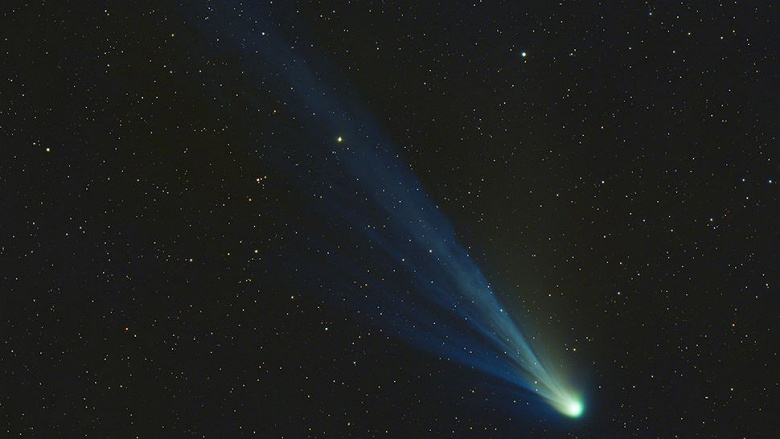How will observing the comet change after it passes the Sun and moves to the southern sky
Comet 12P/Pons-Brooks, also known as the Devil's Comet, has captured the attention of observers with its impressive image and bursts of brightness in recent months. On April 21, the comet will be at perihelion, the closest distance from the Sun. Will it survive this meeting?
The odds are good that the comet will not be destroyed. It will pass perihelion at a distance of about 116.8 million kilometers from the Sun, equivalent to about three-quarters the distance from Earth to the Sun. «Devil's Comet» It takes approximately 71 years to orbit the Sun, and previous encounters have not resulted in its destruction. Meteorologist and astronomer Joe Rao stressed that there is no reason to expect any disasters this time.
The only negative point is that after passing by the Sun, the comet will quickly disappear from the sight of observers in the Northern Hemisphere and will become accessible only for observation from the Southern Hemisphere of the Earth. Typically, comets reach maximum brightness within a few weeks of perihelion, and then gradually dim as they move away from the Sun.
See «Devil's Comet» in the northern sky there is still a chance before it completely disappears from sight. According to Rao's forecasts, by the end of May its brightness will decrease to the 6th or 7th magnitude, and by the end of June — until the 8th or 9th. Residents of the Southern Hemisphere, in turn, can now begin to observe it in the southern sky.
After perihelion on April 21, the comet will continue its journey through the solar system, and the next time it is expected to return to our sky is only in 2095.
Not all comets «survive» when approaching the Sun. Approaching the Sun closer than Mercury (58 million kilometers) can lead to their destruction.
Most comets spend most of their time in the distant regions of the solar system, where the temperature is much lower, — from -184 to -240 Celsius. As they approach our star, their temperature increases rapidly, creating a significant thermal load. However, in the case of comet 12P/Pons-Brooks, its distance from the Sun allows catastrophic scenarios to be avoided.

